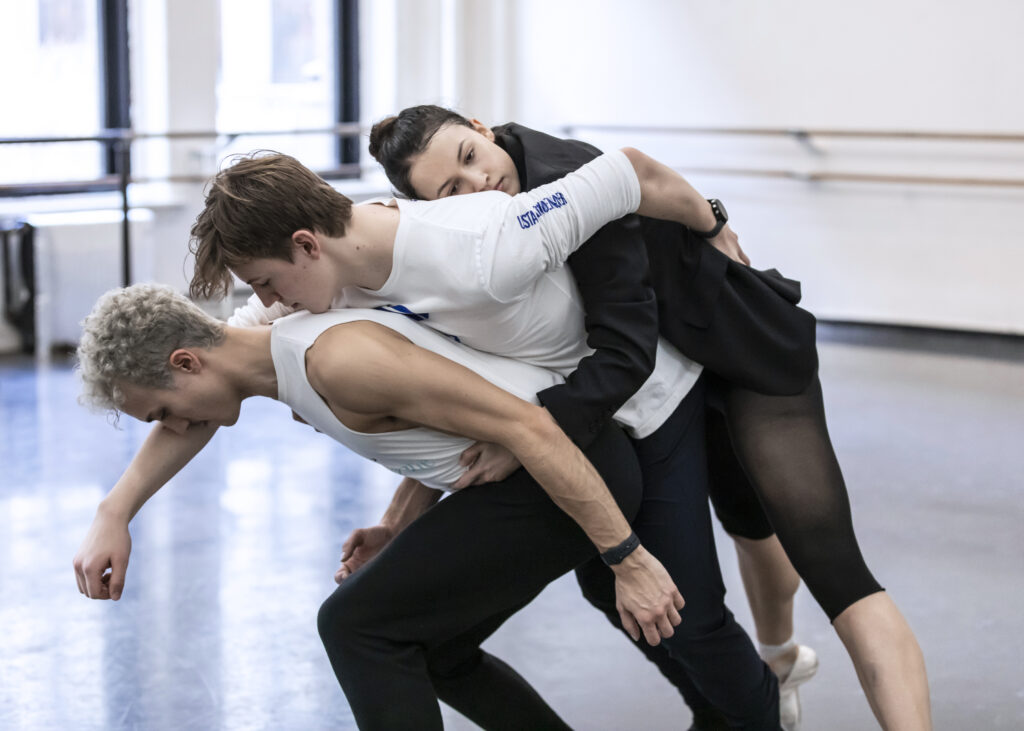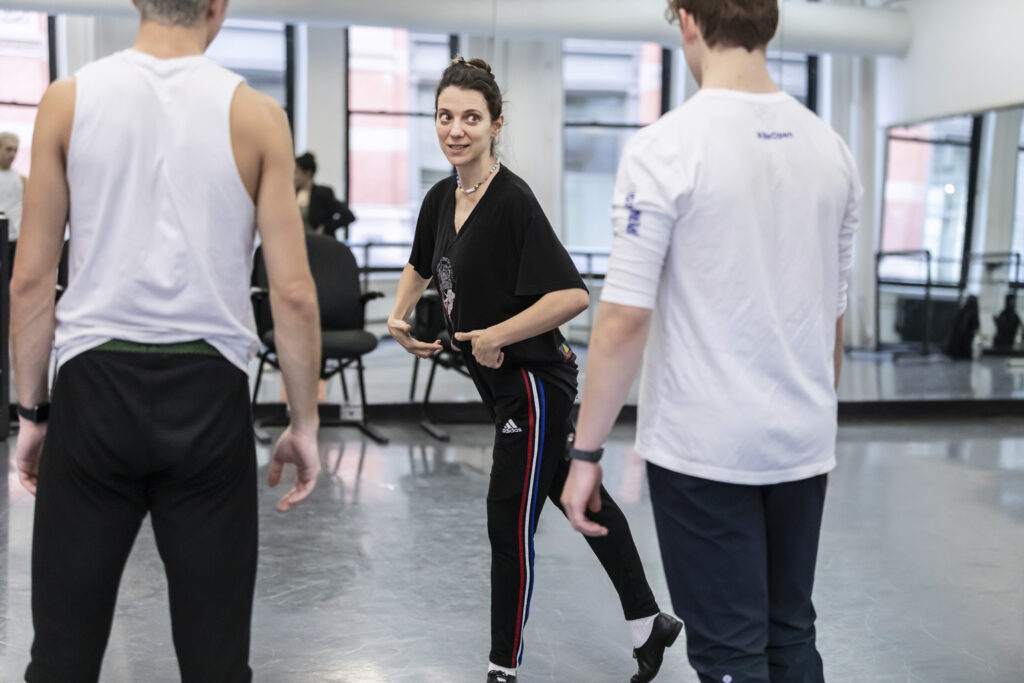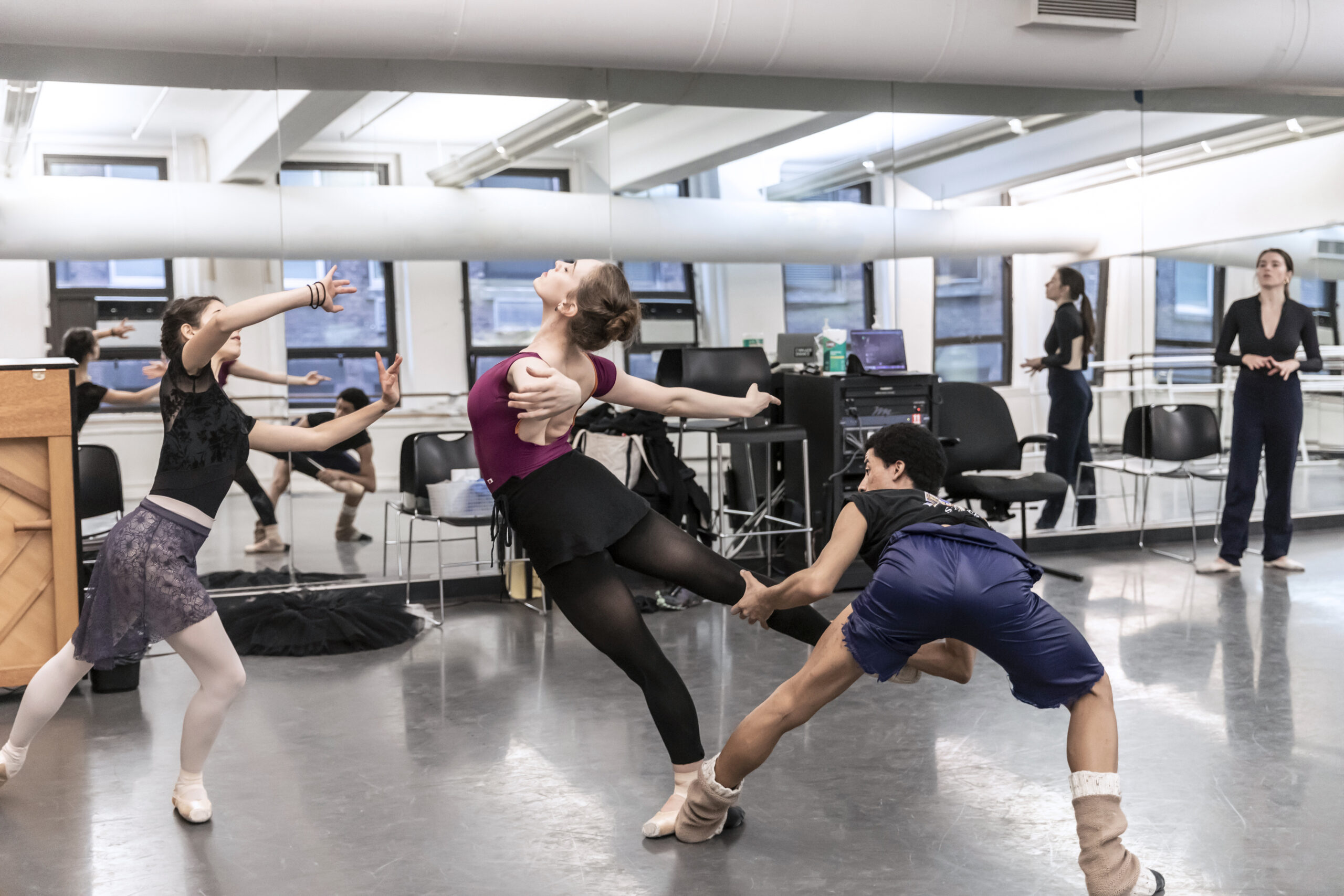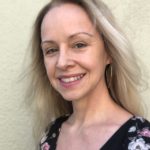Behind the Scenes of ABT’s Annual Incubator Choreographic Residency
American Ballet Theatre’s dance training programs are the stuff of legend, but the company is also dedicated to cultivating new choreographic voices. ABT’s Incubator program, now in its fifth year, brings a cohort of young choreographers to the company’s studios for a two-week residency each January that includes studio time, a cast of two to three dancers from ABT’s corps and apprentice ranks, choreographic coaching—and complete artistic freedom to create a 5- to 10-minute work. And for the first time, the 2023 Incubator culminated in a live performance that took place on January 13 at Pace University.
“ABT and other dance companies have a responsibility to encourage and allow opportunities for emerging choreographers to develop,” says Jose Sebastian, Incubator’s artistic director and a dancer in the company’s corps de ballet. “Incubator is an essential way of fulfilling that commitment.”
This year’s cohort, chosen by audition, spanned five artists at different stages of their careers—from seasoned dancemakers Mark Caserta and Roderick George, to newer choreographer Eva Alt, to ABT soloist Luciana Paris and first-time choreographer and corps member Tyler Maloney—whose movement styles encompass contemporary dance, classical ballet, tango and hip-hop influences. “There is a great range of aesthetics in this year’s group of choreographers,” says Gregory Dolbashian, who provided choreographic consultation. What united them, he says, is that “while they’re at various stages of their development as individual makers, they all have a very thoughtful and supportive approach to their work and their collaborative exchange with their casts.”
Incubator also offers ample rewards for the dancers, who gain experience in artistic collaboration and expand their expressive palette with boundary-pushing movement. “The chance to create on one’s colleague is priceless,” says Sebastian, “as is the opportunity for these emerging artists to work together with other choreographers.”
Dance Magazine went into the ABT studios with each group of artists for a glimpse into their Incubator experience.
Eva Alt
“For me it began with the music, which is a guitar quartet arrangement of a Philip Glass string quartet. I started listening to it when we were coming out of the pandemic and I was walking all over the city, watching it reawaken and come to life again. When I hear music, I see it physically, and I was seeing dance images that had a bit of a ballroom flavor to them. I love watching ballroom dance, and that musicality and intensity was something I wanted to imbue in the piece. I knew that it would be a fun, playful and joyful piece naturally, so I just let those feelings spring from the movements.”
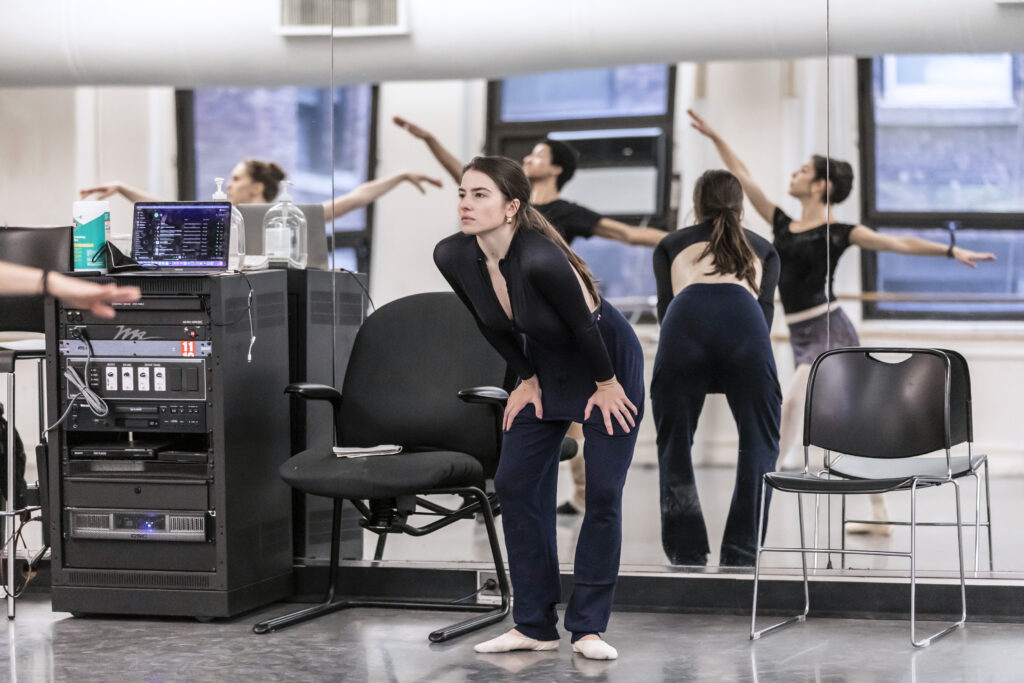
“Making a dance is like solving a puzzle, and I truly have relished in that process with the dancers. They have been so incredibly invested in the work with me and I’ve so enjoyed figuring it out collaboratively.”
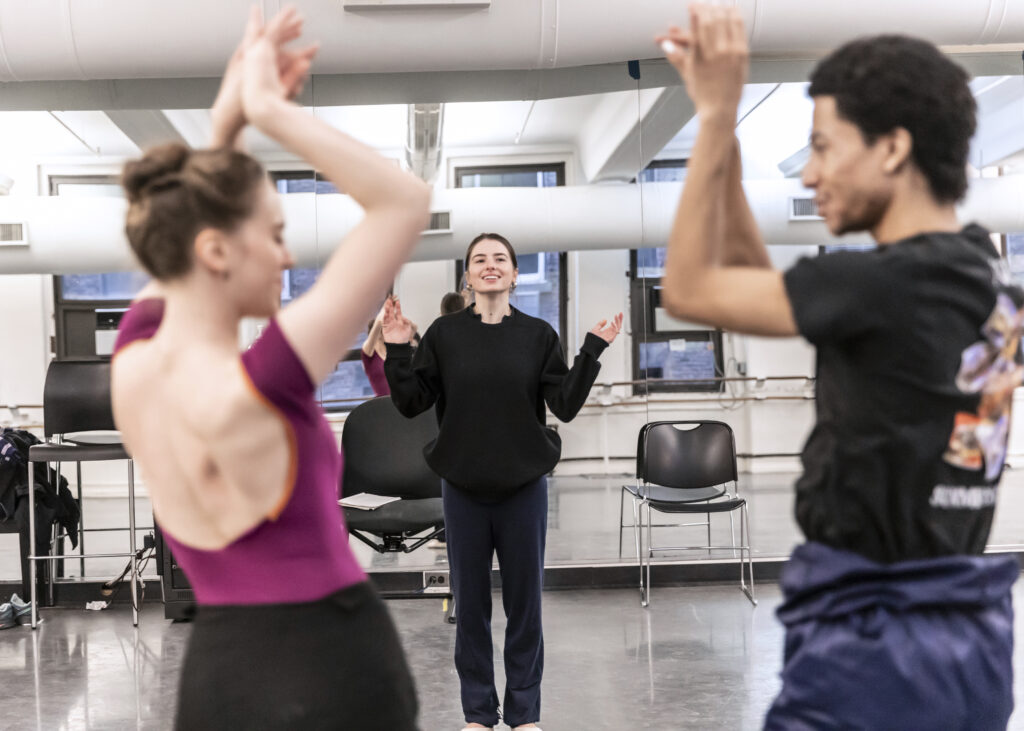
Roderick George
“Most of my work is built on improv studies that I don’t articulate in the room. The creative process begins with me creating tasks for myself, and I film myself improvising in my home, the studio, outside, etc. I let these systems ride in the room, and then I take the artist/human social cues as the impetus of the choreographic cues. Then with repetition and music, these cues become more solidified.”
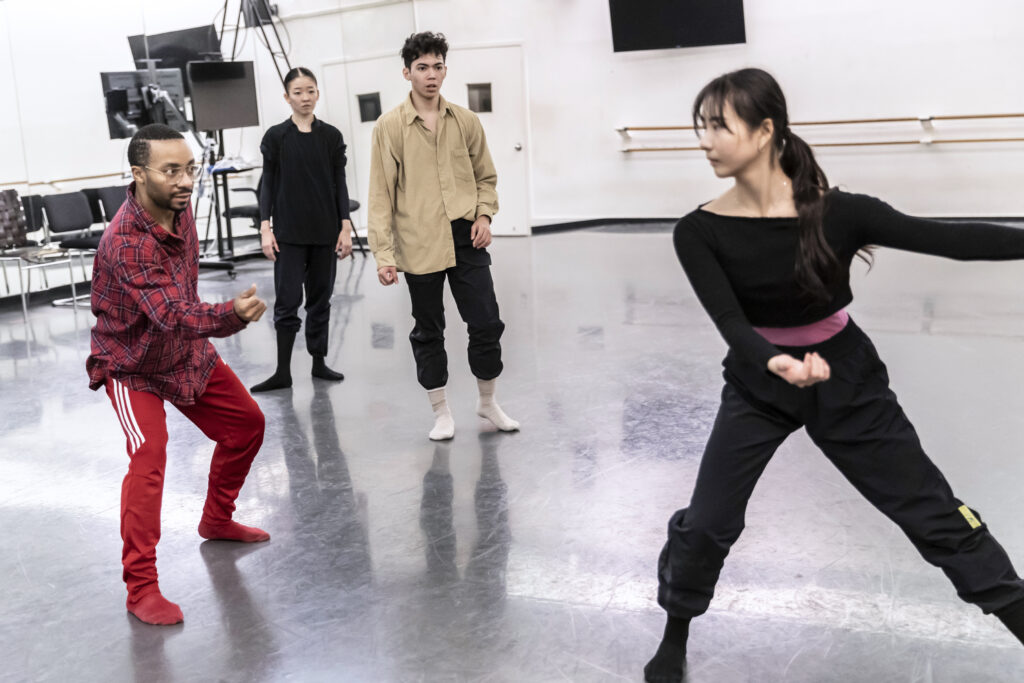
“I use a mixture of social dances, ballet aesthetics, forms of modern dance and acrobatics. Most are all-encompassing ideas from my professional dance career.”
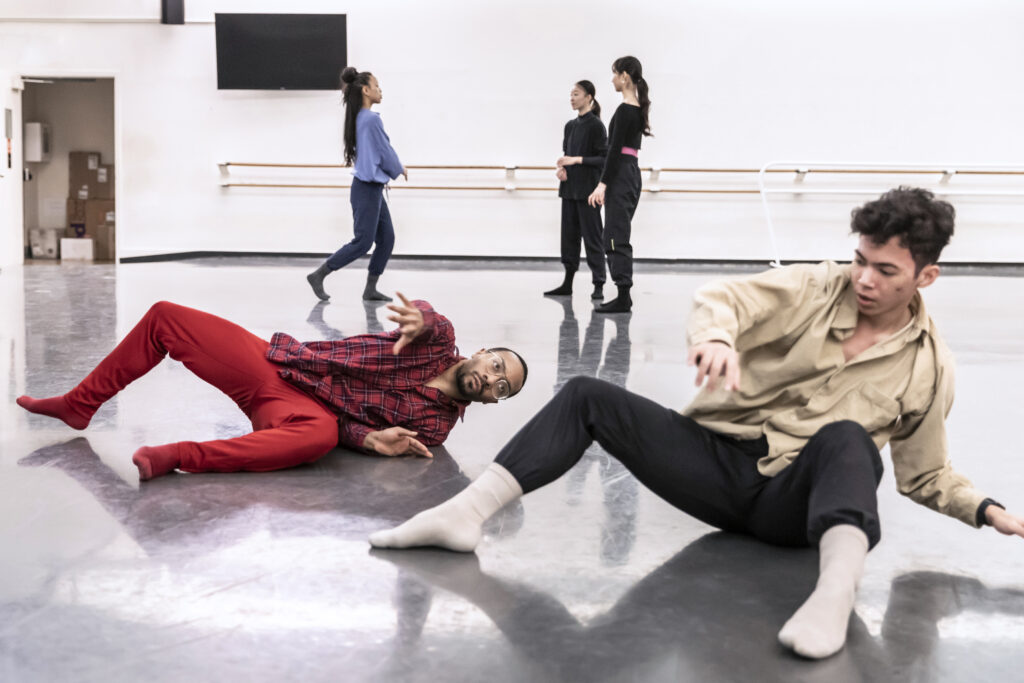
“I wanted to dive into an atmosphere of how artists orbit their psyches around perfection and validation, yet I want to find ways to honor their most authentic form—the many emotional arches that individuals embody and their complexity. As artists, we are vessels of society and the realms we participate in.”
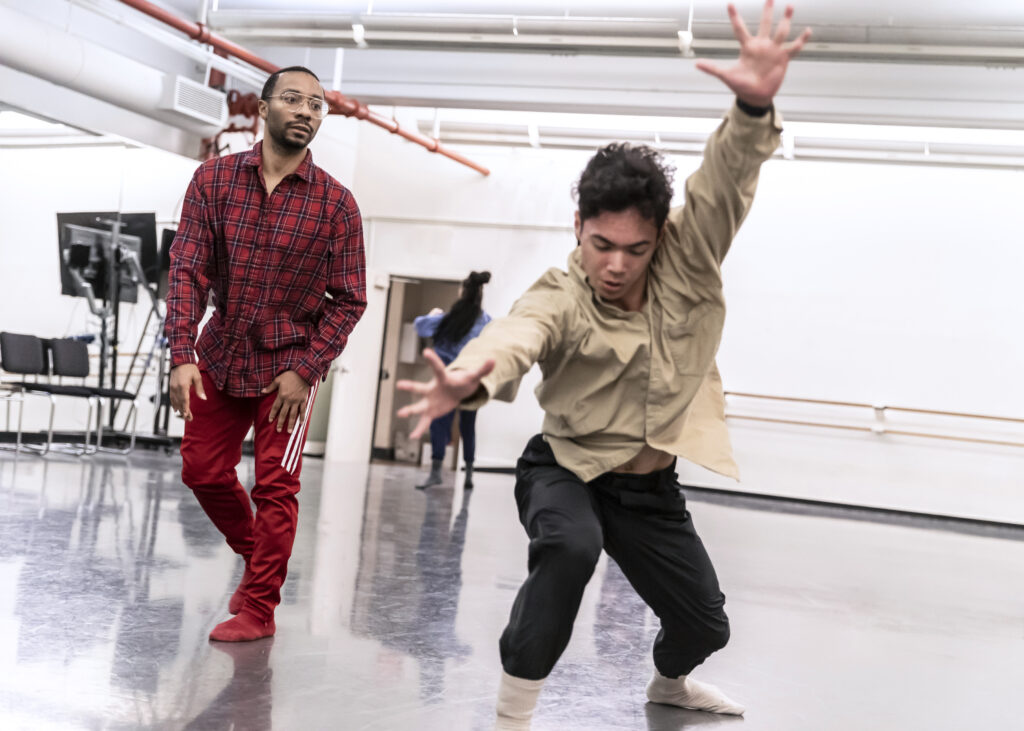
Mark Caserta
“The movement language is a culmination of my background as a dancer and artist, blended with the uniqueness of the people involved in each work. The language is full of references to queerness and my experiences as a queer person, contemporary ballet, theatricality and drama, and reimagining the forms I’ve dedicated my education to studying. I value rhythm, texture, patternmaking and rearrangement. But the biggest informers of my movement language are the artists I’ve collaborated with and what they’ve individually found within the choreography and direction I offer.”
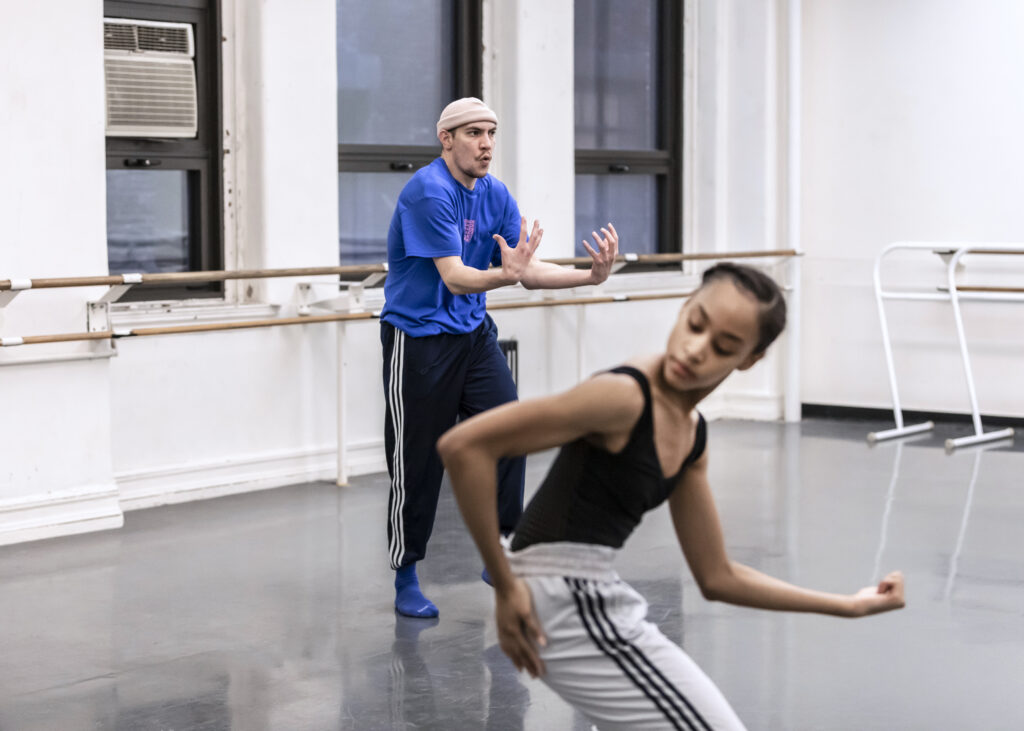
“I love moving with each person in the studio individually. It’s a really fun way to get a feel for their unique energy and artistic signature. Initially, we created unique material for everyone as individual solos, and the energy felt right to flow from there into a solo and a unison duet.”
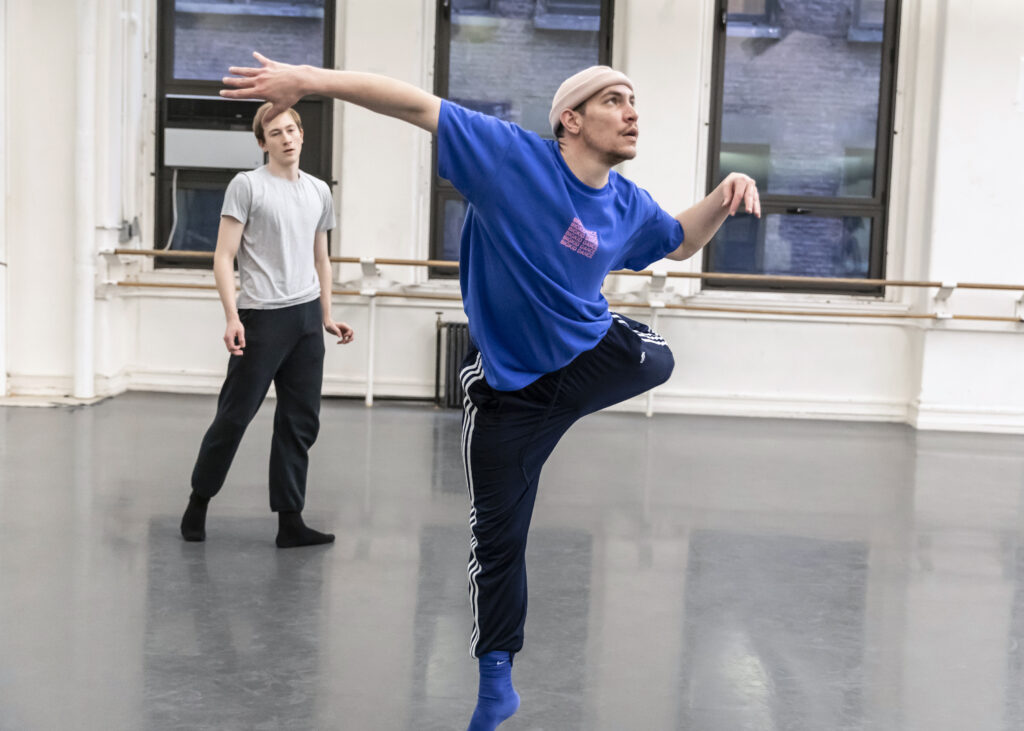
“Life is wild and scary, and it often feels like we’re experiencing the world ending. It is really exhausting to simply exist as a person connected to the world these days. I think all of this has gone into the language of the work. Watching Aleisha, Fangqi and Joseph grow and take on the challenges of this process has been incredible, and their self-empowerment in the creative process is vital to the feeling of the work. The piece is capturing and heightening the uniqueness of our time together with these challenges and glimmerings in mind.”
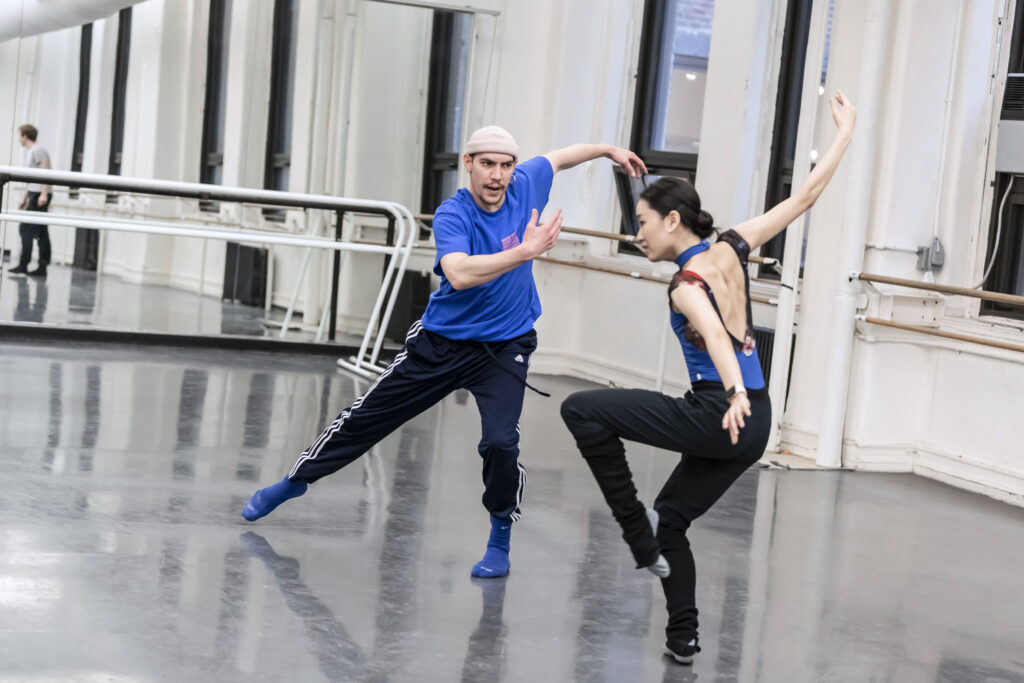
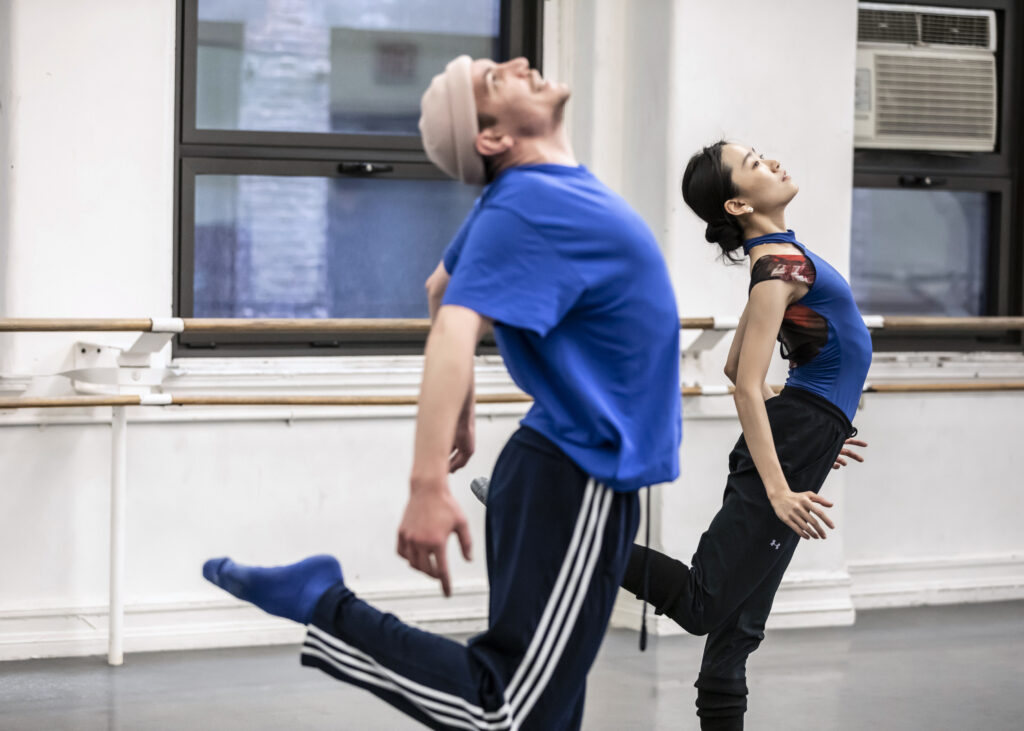
Tyler Maloney
“I am naturally very narrative-driven, so I wanted to push myself in this creation to make something that still makes the audience feel something without it being too literal. The concept I had was who we are and how we present ourselves outwardly, and the battle within to find the strength to say and do what we really mean. The piece is a lot about pushing yourself and also facing who you really are.”
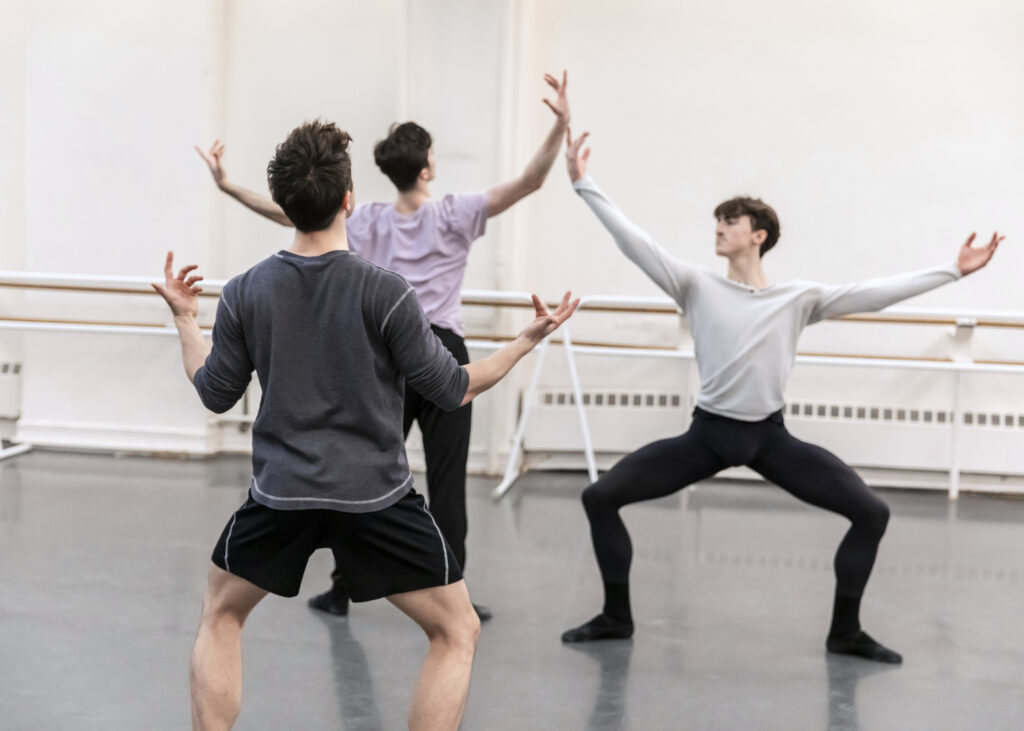
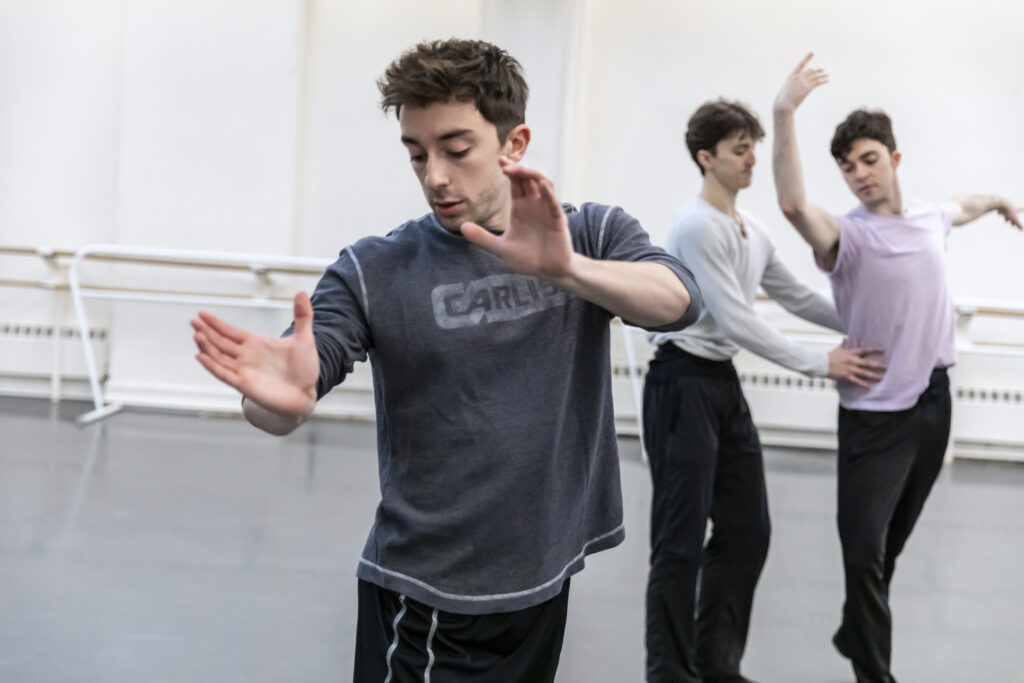
“My goal is to showcase classical technique in a way that anyone watching, no matter their experience with ballet, can feel and relate to the piece. I try to mix virtuoso ballet steps with more pedestrian moments.”
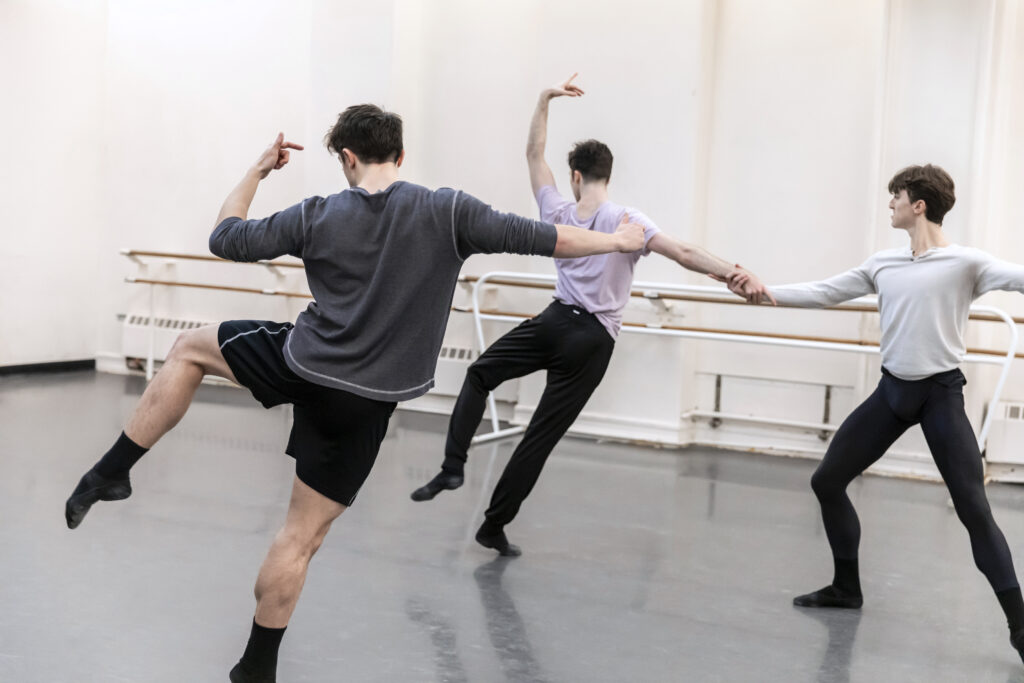
Luciana Paris
“The choreography all happened in the studio with the dancers. I choreograph my ideas, but I always prioritize their comfort—what can feel natural for me can be completely different for my dancers, not organic. I’m discovering this is what I enjoy the most about collaborating, understanding my movement through the dancers.”
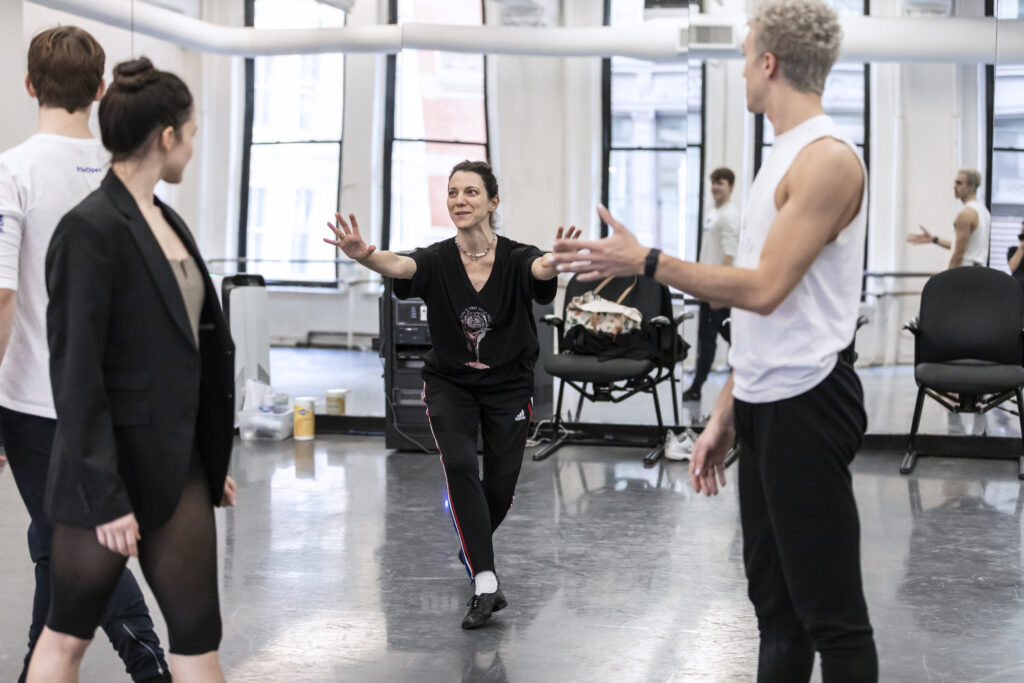
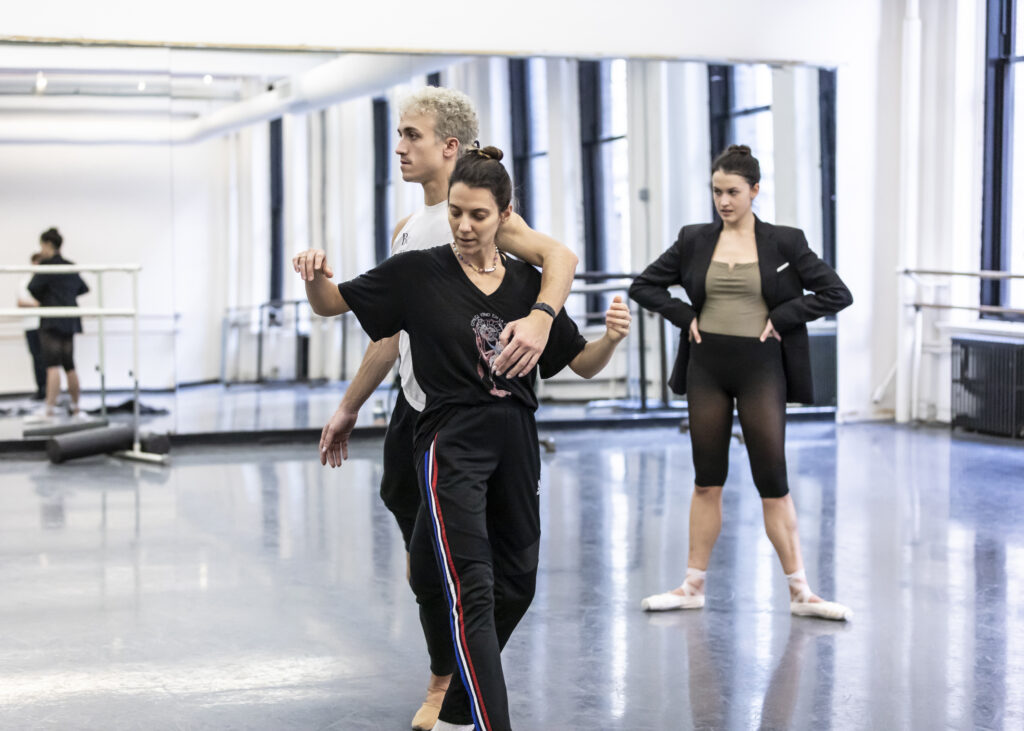
“The tango music defines a lot of the movement in the piece. I wanted to explore tango between men, how it started in the streets of Buenos Aires, but from a different perspective, with the freedom that we have these days, when tango is danced all over the world, including queer social tango.”
